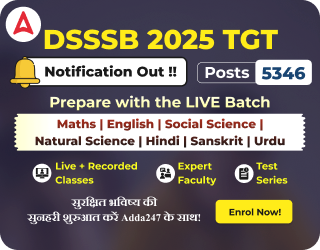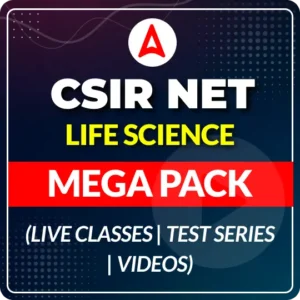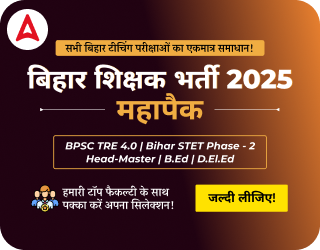Table of Contents
The CSIR NET Chemical Science 2025 examination will be conducted on 18 December 2025 by the Council of Scientific and Industrial Research (CSIR) to determine eligibility for Junior Research Fellowship (JRF) and Lectureship/Assistant Professor positions in Indian universities and colleges. Success in this exam demands strong conceptual knowledge of chemical sciences, strategic preparation, and mastery of key topics. This article provides a comprehensive overview of the CSIR NET Chemical Science exam pattern, marking scheme, qualifying cut-off marks, and the most important topics to help aspirants prepare effectively and maximize their chances of qualifying.
CSIR NET Chemical Science Exam Pattern
The CSIR NET Chemical Science Exam is conducted to determine the eligibility of candidates for Junior Research Fellowship (JRF) and Lectureship/Assistant Professor positions in Indian universities and colleges. The exam is divided into three parts with consisting 200 marks and is conducted for 3 hours. The question paper is divided into multiple-choice questions (MCQs), and the distribution of questions is as follows:
| Section | Total Questions | Questions to Attempt | Marks per Question | Negative Marking |
|---|---|---|---|---|
| Part A (General Aptitude) | 20 | 15 | 2 | 0.5 |
| Part B (Core Chemical Science) | 40 | 35 | 2 | 0.5 |
| Part C (Advanced Chemical Science) | 60 | 25 | 4 | 1 |
CSIR NET Chemical Science Marking System
The marking scheme for the CSIR NET Chemical Science Exam is as follows:
- Part A: Contains 20 multiple-choice questions, each worth 2 marks, with a negative marking of 0.5 marks for each incorrect answer.
- Part B: Contains 40 multiple-choice questions, each worth 2 marks, with the same negative marking system.
- Part C: This section consists of 60 multiple-choice questions, each worth 4 marks, with a negative marking of 1 mark for incorrect answers.
CSIR NET Chemical Science Qualifying Marks
To qualify for the CSIR NET Chemical Science exam, candidates need to secure the following minimum percentage marks:
- General Category: 33% in Part A, B, and C combined.
- OBC/SC/ST/PwD Candidates: 25% in Part A, B, and C combined.
Important Topics for the CSIR NET Chemical Science Section-wise
To excel in the CSIR NET Chemical Science Exam, candidates must focus on the following important topics section-wise:
Important Topics for the CSIR NET Chemical Science Part A
CSIR NET Part A focuses on General Aptitude, testing candidates’ logical reasoning, numerical ability, and analytical skills. It consists of 20 questions, out of which 15 must be attempted, with each correct answer carrying 2 marks and a deduction of 0.5 marks for incorrect answers.
- Mathematical Methods: Calculus, Algebra, Differential Equations, Vector Analysis.
- General Science: Applied Biology, General Aptitude, Analytical Reasoning, and Logical Reasoning.
- Physical Chemistry Concepts: Basic Principles of Atomic Structure, Gaseous State, Electrochemistry, and Thermodynamics.
Important Topics for the CSIR NET Chemical Science Part B
CSIR NET Part B delves into Core Chemical Science Topics, assessing candidates’ understanding of fundamental concepts in Inorganic Chemistry, Organic Chemistry, Physical Chemistry, and Analytical Chemistry. This section includes 40 questions, with 35 to be attempted, and each correct answer is worth 2 marks, with a 0.5-mark penalty for wrong answers.
Physical Chemistry:
- Quantum Chemistry: Wave Functions, Operators, Schrödinger Equation, Quantum Mechanics.
- Chemical Kinetics: Rate Laws, Reaction Mechanisms, Catalysis, Temperature Dependence.
- Thermodynamics: Laws of Thermodynamics, Enthalpy, Entropy, Free Energy, Chemical Potential.
- Group Theory: Symmetry Operations, Point Groups, Character Tables, Molecular Orbitals.
- Surface Chemistry: Adsorption, Colloids, Catalysis, Surface Tension, Applications of Surface Chemistry.
Organic Chemistry:
- Stereochemistry: Isomerism, Chirality, Optical and Geometrical Isomerism.
- Reaction Intermediates: Carbocations, Carbanions, Free Radicals, and their Stability.
- Organic Photochemistry: Photochemical Reactions, Photophysical Processes, Photoisomerization.
- Pericyclic Reactions: Mechanisms, Electrocyclic Reactions, Cycloadditions, Sigmatropic Rearrangements.
- Organic Spectroscopy: IR Spectroscopy, NMR Spectroscopy, Mass Spectrometry, UV-VIS Spectroscopy.
Inorganic Chemistry:
- Chemical Bonding: Valence Bond Theory, Molecular Orbital Theory, Hybridization.
- Coordination Compounds: Ligands, Nomenclature, Bonding, Isomerism, Crystal Field Theory.
- Organometallic Chemistry: Organometallic Compounds, Metal-Ligand Bonding, Applications.
- Bioinorganic Chemistry: Metal Ions in Biological Systems, Enzyme-Catalyzed Reactions.
- Inorganic Spectroscopy: UV-Visible Spectroscopy, Infrared Spectroscopy, Nuclear Magnetic Resonance (NMR).
Important Topics for the CSIR NET Chemical Science Part C
CSIR NET Part C is the most advanced section, focusing on Advanced Chemical Science Topics and interdisciplinary areas. It tests candidates’ in-depth knowledge and application skills in higher-level topics such as organometallic chemistry, pericyclic reactions, statistical thermodynamics, and molecular spectra. This part consists of 60 questions, out of which 25 must be attempted, with each correct answer carrying 4 marks and a deduction of 1 mark for incorrect answers.
Physical Chemistry:
- Quantum Chemistry: Perturbation Theory, Hartree-Fock Method, Molecular Orbitals.
- Chemical and Statistical Thermodynamics: Partition Functions, Gibbs Ensemble, Phase Transitions.
- Chemical Kinetics: Integrated Rate Laws, Complex Reactions, Chemical Dynamics.
- Molecular Spectra: Rotational, Vibrational, and Electronic Spectra, Raman Spectroscopy.
- Electrochemistry: Electrochemical Cells, Potentiometry, Electrolytic Conductivity.
- Group Theory: Application to Molecular Symmetry, Vibrational Modes, Character Tables.
Organic Chemistry:
- Reaction Mechanisms: Substitution, Elimination, Addition, Rearrangement Reactions.
- Reagents: Organometallic Reagents, Redox Reactions, Reagents in Synthesis.
- Name Reactions: Finkelstein Reaction, Grignard Reaction, Aldol Condensation.
- Pericyclic Reactions: Detailed Mechanisms, Reaction Conditions, and Applications.
Inorganic Chemistry:
- Coordination Compounds: Molecular Orbitals, Spectral Properties, Magnetism.
- Organometallic Chemistry: Metal-Ligand Interactions, Applications in Catalysis.
- f-block Elements: Lanthanides, Actinides, Chemistry, and Applications.
- Main Group Elements: Group 1-2 and 13-18 Chemistry, Reactivity Trends, and Applications.

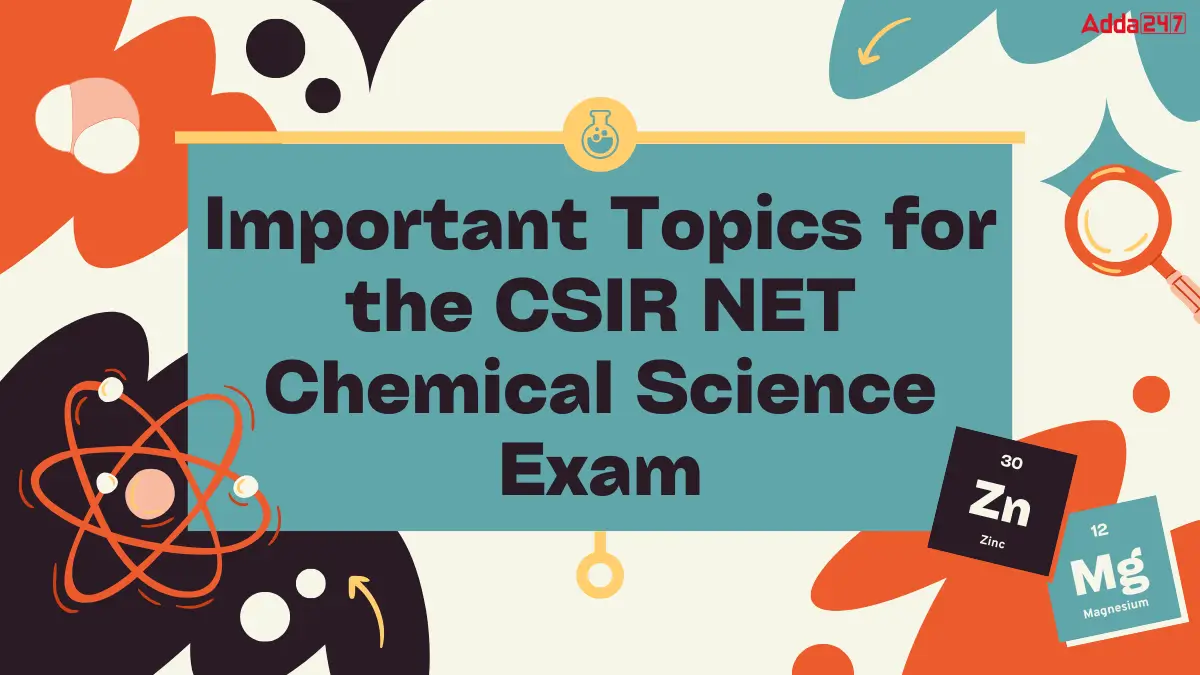

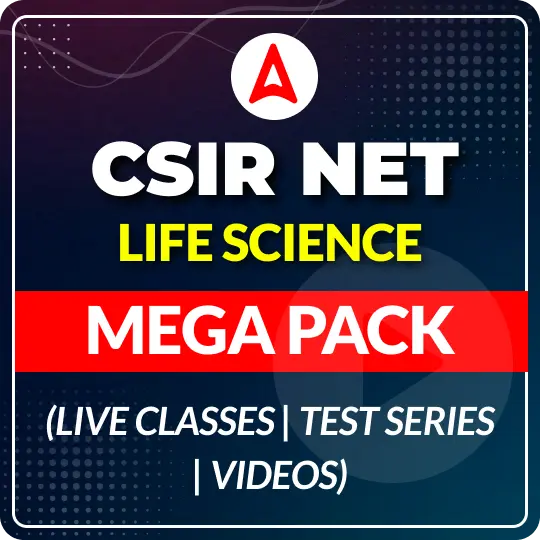

 CSIR NET City Intimation Slip 2025 Out a...
CSIR NET City Intimation Slip 2025 Out a...
 UP LT Grade Teacher Answer Key 2025 Out,...
UP LT Grade Teacher Answer Key 2025 Out,...
 KVS Recruitment 2025 OUT, Check Eligibil...
KVS Recruitment 2025 OUT, Check Eligibil...



